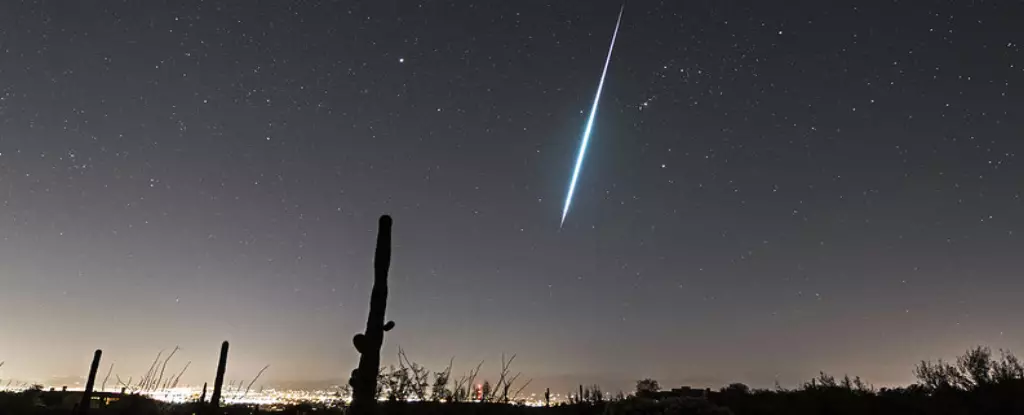As 2024 draws to a close, sky-gazers are presented with an extraordinary opportunity to witness one of the most spectacular meteor events of the year—the Geminid meteor shower. Set to peak during the night of December 13-14, this celestial display promises an enchanting experience for those who are willing to brave the chilly weather and maneuver around the constraints posed by the nearly full moon. The cosmos will be alive with bursts of light, offering a fitting farewell to another year.
Despite the excitement surrounding the Geminids, there are challenges that viewers must navigate. The chilly December weather has a way of discouraging outdoor activity, and this year, the full moon, approximately 98% illuminated, will be present in the night sky. This celestial body is notorious for washing out fainter meteors with its brightness, making it harder to appreciate the full spectrum of meteors. Sky-watchers should prepare for these conditions by dressing warmly and finding locations with reduced moonlight interference, as the moon will be positioned relatively close to the radiant point in the constellation Gemini.
The Geminid shower stands apart from other meteor showers, tracing its origins to 3200 Phaethon, a unique ‘rock-comet’ on a 1.4-year orbit. Unlike traditional comets, which tend to be icy bodies, 3200 Phaethon occupies a gray area between asteroids and comets, intriguing astronomers with its unconventional characteristics. Its upcoming encounter with a Japanese space mission, DESTINY+, scheduled for 2028, highlights a growing interest in extending our understanding of such celestial entities.
Since its first documented display in 1862, the Geminids have gained a stellar reputation, gaining momentum in recent decades to surpass the annual August Perseids. While typically offering up to 120 meteors per hour at its peak, conditions impact visibility. However, the radiant, located near Castor, one of Gemini’s brightest stars, allows meteor observation to begin relatively early in the evening.
For those wanting to make the most of the Geminids, strategic preparation is essential. Selecting a viewing site with minimal light pollution and an unobstructed horizon can significantly enhance the experience. Though the full moon will play a role, observing a few nights before and after the peak can yield rewarding results, particularly as the meteor shower is active for several days.
Choosing to view the meteor shower in the early hours before dawn, when the moon is closer to the horizon, will likely result in better conditions. Observers should consider positioning themselves such that local obstacles, like hills or trees, block out the light of the moon. This careful planning can maximize the likelihood of seeing the meteors against a darker sky.
Sky-watchers can play an important role in meteor science by documenting their observations. By recording the number and activities of meteors seen during their viewing sessions and reporting this data to organizations such as the International Meteor Organization (IMO), amateur astronomers can contribute valuable information that furthers our understanding of meteor showers.
Additionally, innovative approaches to capturing the beauty of the meteor shower can enhance the experience. Using a DSLR camera with an intervalometer can facilitate the systematic capture of images, allowing enthusiasts to review their photographs later for stunning images of the meteors as they streak across the night sky. Positioning the camera away from the radiant point can yield visually interesting shots that profile the meteors.
As 2024 comes to an end, the Geminid meteor shower presents a wondrous opportunity to connect with the cosmos. With proper planning, adjustments for moonlight, and an open mind, sky-watchers can indulge in the magnificence of this annual spectacle. Embrace the chill of December nights and prepare to be amazed by the fleeting beauty of the Geminids, marking a delightful end to the year in stargazing.


Leave a Reply